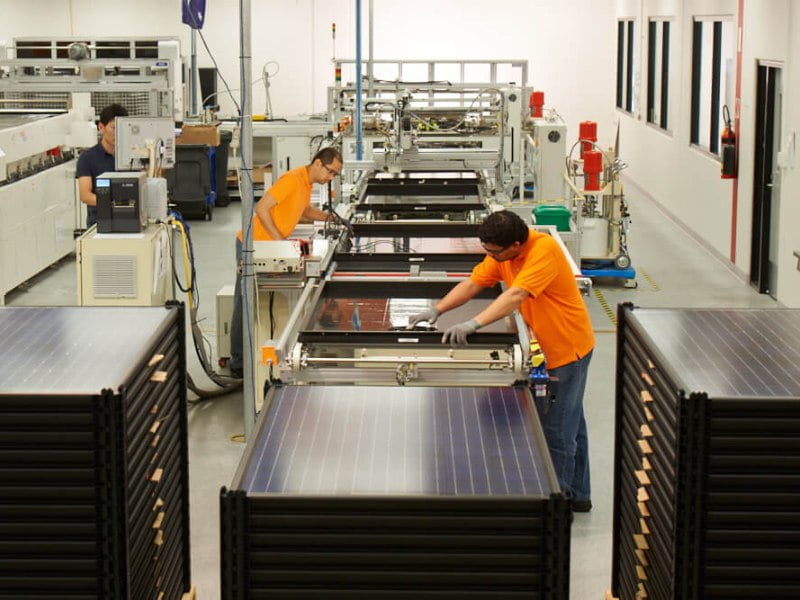The federal government’s $1 billion program to build supply chain resilience in solar panel manufacturing has opened to applications amid a political storm over its economic merits.
The first $550 million in grants and production credits opened over the weekend, mainly targeting commercial-scale manufacturing of solar photovoltaic modules, cells, framing and solar glass.
The program forms part of the $22.7 billion Future Made in Australia plan — the government’s answers to growing interventionism in industry policy. It is being led by the Australian Renewable Energy Agency (ARENA).

Solar Sunshot round 1A will make up to $350 million in production credits per successful project over 10 years. Grants for capital costs related to manufacturing facilities will also be capped at $50 million.
The production credits are designed to bridge the difference between the production cost of locally made solar panels and its expected sale price based on the price of comparable technologies manufactured overseas.
There is no requirement for project backers to be Australian-owned companies and there are no explicit local content requirements, although local supply chain integration and use of innovation are included in the merit criteria.
Another $50 million under round 1B will fund feasibility or engineering studies for the manufacture of technologies beyond those supported under round 1A, including polysilicon, ingots and wafers, and solar inverters.
Expressions of interest for the round close on December 10, with full applications due to by the end of April 2025. Round 1B applications will close in mid-November 2025.
Amid concerns about Australia’s ability to produce solar panels at globally competitive prices, ARENA says the billion-dollar production credit program is aligned with its vision for ultra-low cost solar.
Part of ARENA’s ultra low-cost solar ambition is to lower the total cost of utility scale solar energy projects to 30 cents per watt, with solar panels accounting for up to 40 per cent of the costs in 2022, according to the International Renewable Energy Agency.
However, the agency acknowledges in a FAQ document that “it will take some time for Australian manufacturing to become competitive on a global scale” with subsidies needed to attract private investment “in the early stages of industry”.
A $1 billion program is needed to “incentivise private capital to invest in the early stages of industry in Australia in a highly competitive global market” and help develop economies of scale, it said.
Solar Sunshot will target parts of the supply chain where Australia has “comparative advantages such as access to raw materials and low-cost clean electricity supply”.
But at a parliamentary inquiry last Thursday, Productivity Commission deputy chair Alex Robson said “identifying comparative advantage, even in a backward-looking sense, is very difficult”.
“Identifying it in a forward-looking sense is likely to be even more difficult. Developing a comparative advantage in something where it may not exist at the moment is an exercise that comes with risks,” Mr Robson said.
The solar PV supply chain is currently dominated by China, which accounts for around 80 per cent of global production for all key manufacturing stages, according to the International Energy Agency (IEA).
Grattan Institute deputy program director for energy and climate change Alison Reeves added that “economic resilience” has often been used to prop up completely unviable industries”.
Instead, Grattan would prefer to see greater investment in “early stages of technology” to reduce risks, the Grattan Institute’s program director for climate change and energy Tony Woods told the same inquiry.
Do you know more? Contact James Riley via Email.

